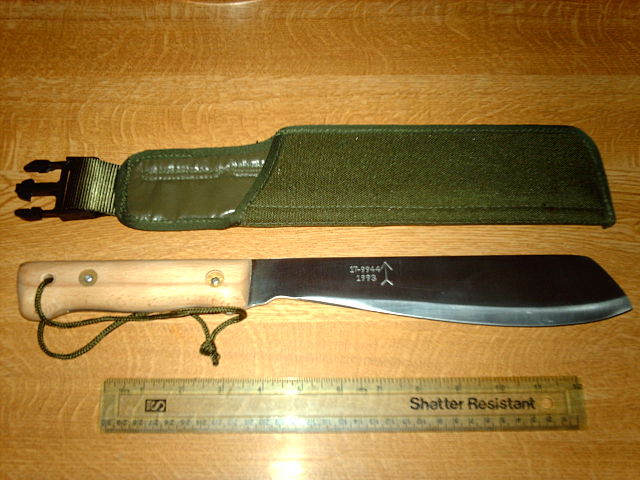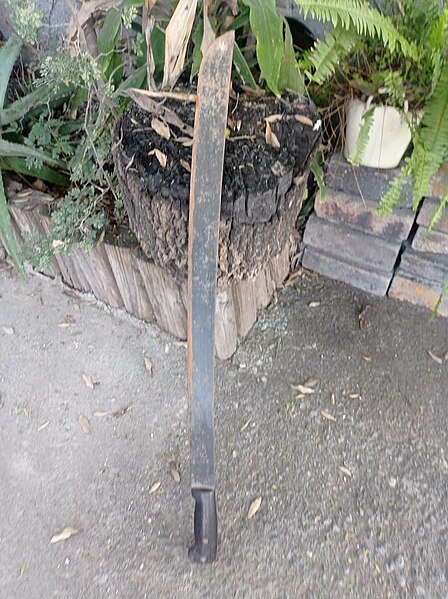A golok is a cutting tool, similar to a machete, that comes in many variations and is found throughout the Malay Archipelago. It is used as an agricultural tool as well as a weapon. The word golok is used in Indonesia and Malaysia. Both in Malaysia and in Indonesia, the term is usually interchangeable with the longer and broader parang. In the Sundanese region of West Java it is known as bedog. In the Philippines, the term gulok, refers to different dagger weapons including the kris.
A traditional Indonesian golok
Silat Betawi demonstration of disarming a person who has a golok.
Martindale design is a modern representation of another traditional golok variant, the Golok Bangkung.
A machete is a broad blade used either as an agricultural implement similar to an axe, or in combat like a long-bladed knife. The blade is typically 30 to 66 centimetres long and usually under 3 millimetres thick. In the Spanish language, the word is possibly a diminutive form of the word macho, which was used to refer to sledgehammers. Alternatively, its origin may be machaera, the name given by the Greeks and Romans to the falcata. It is the origin of the English language equivalent term matchet, though this is rarely used. In much of the English-speaking Caribbean, such as Jamaica, Barbados, Guyana, Grenada, and Trinidad and Tobago, the term cutlass is used for these agricultural tools.
Machete/saw combo
Mexican artisan Agustín Cruz Tinoco using a machete to carve wood
Campos Hermanos Mexican machete with blade 75 centimeters long and 93 total.






